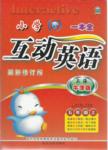题目内容
Those in the living room, which are the most ______ to hurt us, are computers, televisions and lamps
- A.possible
- B.probable
- C.likely
- D.possibly
试题分析:固定搭配be likely to do sth很有可能做某事;本题其余三项主语通常是it等非人的名词。句义:那些在起居室里最可能伤到我们的东西是电脑,电视或者灯。故C正确。
考点:考察固定搭配

 互动英语系列答案
互动英语系列答案In the computer age, most of us take a broadband Internet connection for granted. Whether cable or mobile broadband, today’s connections are many times faster than those in the early days. Videos play smoothly, complex websites load quickly, and files download much faster than ten years ago. And the files are much bigger too.
There’s a catch, of course. You have to live near enough to a major city to get broadband Internet. If you don’t, it’s slow dial-up access for you. And for those living really far out, there may be no Internet access at all.
Technology experts often talk about the “last mile” problem, which refers to the difficulty of bringing Internet access to remote locations. In cities and suburbs, it’s relatively easy to provide access for everyone. It is much more difficult to deliver access to those living far from cities, especially in de veloping countries. Internet service providers, for their part, have been reluctant to provide access to sparsely(稀疏地) populated areas. The handful of Internet users they would reach wouldn’t cover the expense.
veloping countries. Internet service providers, for their part, have been reluctant to provide access to sparsely(稀疏地) populated areas. The handful of Internet users they would reach wouldn’t cover the expense.
But every year, technological advancements allow of more and more Internet users. Most broadband connections today run over existing cable TV and telephone lines although these technologies aren’t available everywhere. Some companies have delivered the Internet over standard power lines. Advancements in cheaper, more efficient fiber optics cables(光纤电缆) promise to bring extremely fast Internet connections to more users.
Still, the “last mile” problem remains hard to deal with. There will always be somewhere that doesn’t have an affordable broadband connection. But someday that might not matter. If the rapid progress in cell phone technology is any indication(迹象), it may not be too long before an Internet connection simply follows you wherever you go.
【小题1】The underlined part “ a catch” (in Paragraph 2) probably means “________”.
| A.a rare challenge | B.a desirable plan |
| C.an efficient device | D.a hidden problem |
| A.Internet connection has not been popular in most cities. |
| B.Internet service providers care about rural customers. |
| C.Computer is popular in developing countries. |
| D.It is hard to bring Internet access to users in remote areas. |
| A.make TV and telephone available everywhere |
| B.bring great change to people’s everyday life |
| C.make it possible for more people to use the Internet |
| D.bring faster Internet connections to users |
| A.The broadband connection’s getting faster. |
| B.More and more Internet users. |
| C.More and more Internet connections. |
| D.The rapid progress in cell phone technology. |